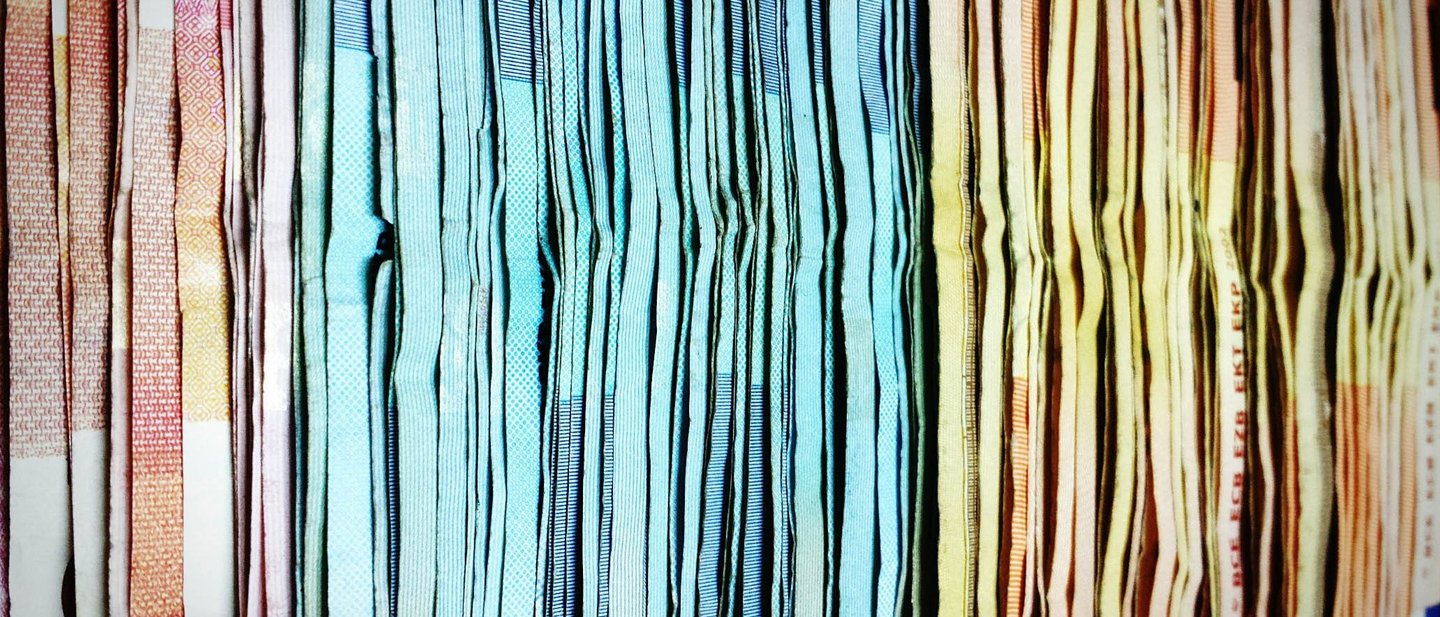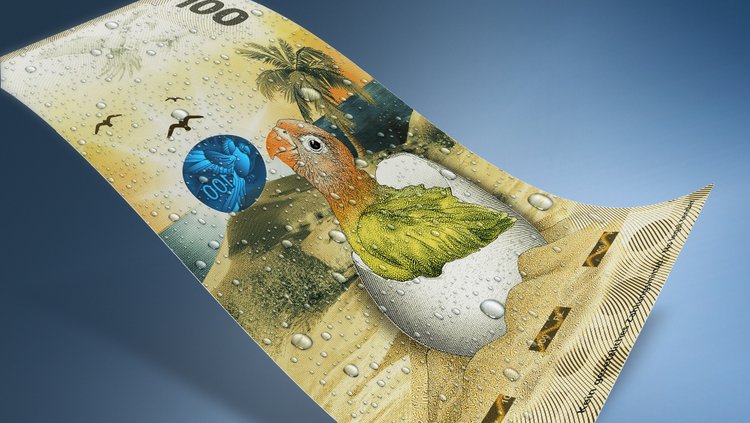Are you interested in more exciting facts about cash and currencies?
Take a look at our collections of facts about the euro and facts about coins.

Paper money: we withdraw it from the ATM, fold it into our wallets, stick it when it rips, wish we had more – but how often do we stop to think about who designs it, what it’s made of, how durable it has to be, and how long it lasts? From the smallest to the toughest, the greenest and the most valuable – read on to discover 10 unusual facts you didn’t know about the banknote in your wallet.
One of the rarest and most sought-after pieces of American paper money, the Grand Watermelon $1,000 banknote from the 1890s sold at auction in 2018 for a record-breaking $2.04 million. Only seven such notes are known to exist, three in private collections. Despite its playful name – which refers to the design of the zeros on the note – the Grand Watermelon has become a world famous icon of American finance history.
Many countries have printed gorgeous images of wildlife on banknotes – from the dove and palm leaves on Ethiopia’s new 200-birr note, to the renowned African fish eagle found on all of Zambia’s kwacha notes, to elephants, lions, and buffalo on South African rand banknotes. So what’s the most popular animal to feature on a banknote? No great surprise to find it’s the bird – with the king of them all, the mighty eagle, featuring on no fewer than 41 currencies around the world.

Fijians are passionate about rugby union, both the traditional 15-a-side format and 7-a-side. The national 7-a-side team, known as the Fiji Sevens, is one of the most successful in the world, winning multiple World Rugby Sevens Series and Rugby World Cups as well as gold at the 2016 Summer Olympics in Brazil. The Republic of Fiji created its first ever $7 bill after the Olympic success, honoring the team by printing two million of a special-edition banknote featuring the players.
Yes, cash is sustainable. For cotton banknotes, for example, G+D uses waste from the textile industry – short-fiber cotton that can’t be used for clothing or furnishings and would otherwise be discarded. G+D’s aim is to increase the proportion of organic and Fairtrade cotton used in their products. Meanwhile, the new Philippine peso is as organic as they come, made of 80% cotton and 20% local abacá banana hemp, which is also used for tea bags, cigarette paper, sausage casings, and industrial filters.
The costs of producing paper money depend on many factors, such as the size of the banknote, its security features, and the production quantity. According to the German Federal Bank, a euro banknote costs on average 8 cents to produce,1 while in the US the Federal Reserve says that the cost of printing paper money ranges from 7.7 cents to 19.6 cents per note.2
Andy Warhol’s “Dollar Sign” series from 1982 has become an immediately recognizable icon depicting the moment when art intersects with money and commerce. At the time they were made, the signs reflected Warhol’s fascination with money as a symbol of status and power. Nowadays, his dollar-sign paintings are worth tens of millions of dollars. As Warhol himself said in his book The Philosophy of Andy Warhol (1975), “I like money on the wall.”
Throughout their lifetime, banknotes have to be resilient. Low-value “market” notes, in particular – currency that passes through our hands many times a day – need to be robust. Banknote paper must therefore meet standards in special stress tests, including being exposed to 120°C hot air for 30 minutes; put through a washing machine cycle at 95°C and 900 spin revolutions per minute; and enduring five minutes of pressing under a 160°C iron. Once the paper has survived that, the banknotes are ready for anything we can do to them.
Romania’s 10-bani coin is one of the currencies that features an eagle, this time wearing a crown. But back in 1917, the 10-bani note that was produced as part of a war series by the country’s Ministry of Finance is the smallest banknote ever to be produced in the world. Measuring a miniature 44 mm by 33 mm, the green banknote featured King Ferdinand I on the front and the coat of arms of Romania on the back. Underneath the coat of arms was printed text threatening counterfeiters with five to 10 years in prison.
Nowadays, banknotes are counted, sorted, and verified by banknote processing systems, using sensors to evaluate fitness and authenticity. Sensors like G+D’s SensorBrain® can collect 25 MB of data from each banknote, using it to detect soiling and deterioration, thinning of the material, and tears held together by sticky tape. The sensors also read the banknote’s magnetic characteristics and differentiate the images of the various magnetic substances. Combined analysis of this sensor data is possible with SensorFusion®, which uses deep fusion algorithms.
When banknotes become heavily wrinkled, damaged, or dirty, security can’t be guaranteed. Banknotes are therefore checked and replaced regularly: indeed, each year, a staggering 170 billion banknotes are shredded and replaced with brand-new ones, hot off the press. So when it’s gone, it’s gone for good – leaving room for fresh, new money.
Take a look at our collections of facts about the euro and facts about coins.
Published: 24/09/2020
Don’t miss out on the latest articles in G+D SPOTLIGHT: by subscribing to our newsletter, you’ll be kept up to date on latest trends, ideas, and technical innovations – straight to your inbox every month.